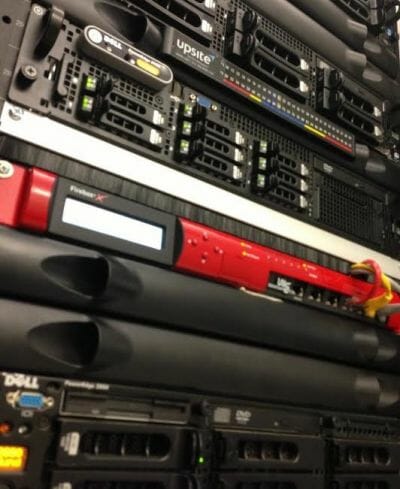4 Steps to Make Your Data Center More Green in 20148 min read

Although making your data center more green does mean making it more ecological and reducing CO2 output, industry experts know that dollars are the greatest motivator for change in this area, not just CO2 levels. In many industries, getting greener can drive up costs. Fortunately for data center operations, getting greener involves saving money since power consumption is such a sizeable chunk of data center costs.Analysis of Power Usage Effectiveness (PUE) reveals that most of the C02 is created within the cooling infrastructure. Therefore, alleviating this poses the greatest opportunity for improvement.Following are four steps to help make your data center greener in 2014.
The 4 Rs
You can improve your data center airflow management (AFM) by making necessary changes at each of four levels in their proper sequence (raised floor, rack, row, room) as shown in the following steps:
- Raised Floor – Manage the open area of the horizontal plane of the raised floor. Seal cable openings using products such as grommets and brushes, and manage perforated tile placement. Check the perimeter walls below the raised floor for unsealed wall or partition penetrations. Sealing these penetrations often requires fire-rated materials.
- Rack – Close all open space of the vertical plane of IT equipment intakes. Install blanking panels and rack grommets, seal under cabinets, and seal between mounting rails and sides of cabinets.
- Row – Fill open spaces using under-rack panels or sealing tape, and fill spaces where IT equipment cabinets are missing or where there are gaps between cabinets. In some situations when cabinet densities are high enough or the highest possible efficiency is desired, hot or cold aisle containment may be necessary.
- Room – Change the cooling infrastructure by raising cooling unit return air temperature set points. Raise set points as high as possible without exceeding the IT equipment intake air temperature maximum. Turn off cooling units or reduce fan speeds for units with variable frequency drives (VFD) or install VFDs.
Measure Your CCF
Cooling Capacity Factor (CCF) is the ratio of total running manufacturer’s rated cooling capacity to 110% of the critical load. Ten percent is added to the critical load to estimate the additional heat load of lights, people, etc. So you calculate your CCF by dividing the total running manufacturer’s stated cooling capacity (kW) by 110% of the IT critical load (kW).
The total running cooling capacity is the sum of your running cooling units’ rated capacities. If all cooling units are running, then this will be the same value as the total installed cooling capacity. For example, if there are 10 cooling units installed with a rated capacity of 30 tons each and seven are running, then the total running cooling capacity is 739 kW (7 x 30 tons = 210 tons, 210 tons x 3.52 = 739 kW). To convert tons to kW, multiply tons by the constant 3.52.
Besides making your data center greener, calculating your CCF is the quickest and easiest way to determine cooling infrastructure utilization and potential gains to be realized by AFM improvements. Determining your CCF stands alone as a step towards:
• Improving your PUE
• Improving your AFM strategy
• Improving the room environment
• Reducing your operating expense
• Delaying capital expenditures
• Supporting an increase in server density
For more detailed information, refer to Upsite’s CCF white paper here.
In the end, it won’t matter whether you’re trying to reduce CO2 or save money; you’ll end up achieving both!

Airflow Management Awareness Month
Free Informative webinars every Tuesday in June.
0 Comments